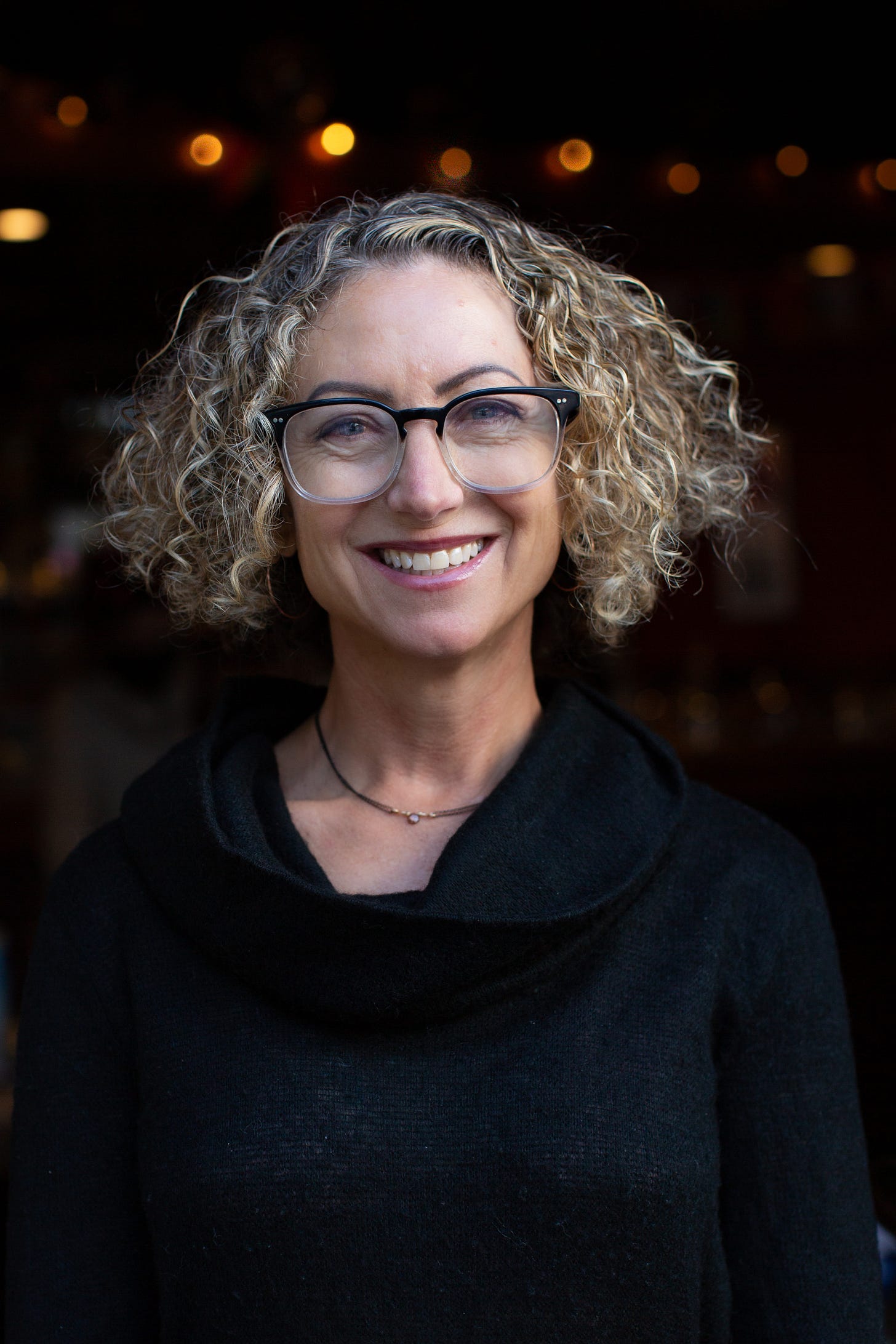This localvore's latest obsession...
If you’re expecting to slobber over delicious food ideas, pictures, and recipes, hang in there. But not today.
this is me.
I told you at the outset: I’m a food systems nerd, and food and fashion are intrinsically entwined (no pun intended.) Yet, I only fully understood that this year. Read on.
There is Fibershed, the non-profit organization in Point Reyes, CA, dedicated to supporting local farmers and ranchers, weavers, sewers, and fashion designers, to create a just, sustainable system for textiles and dyes. And there is Fibershed, the book based on the organization’s founder, Rebecca Burgess, and her journey into regenerative fashion. This is about both the idea behind the book and the organization, and posits that what we choose to wear should be viewed similarly to what we choose to eat: It’s either helpful to combatting climate change or hurtful to our environment.
Let’s define a fibershed:
From soil to skin and back to soil, fibershed is a term coined by Burgess in 2011 to describe a geographical landscape that defines and gives boundaries to a natural textile resource base. A regional fibershed encompasses a 100-150 mile radius, same as that for local food- and water- sheds. A fibershed works with locally grown, organic production and manufacture of natural fibers made from plants such as cotton, linen, and hemp or wool-based textiles from sheep, alpaca, and llama (and yaks in some regions.) The ways in which the materials (fibers and dyes) are grown in a healthy fibershed are shown as “ameliorating the causes of climate change, increasing resilience to drought, and rebuilding local economies,” Burgess states. This sounds exactly like a healthy foodshed, with regenerative agriculture as the framework.
There is indeed a strong correlation between the regenerative food movement and Fibershed’s blueprint. “Clothing is a multi-faceted industry that involves many of the supply-chain dynamics as the food industry, starting with its roots in agriculture and dependence upon the land.” So, similarly to the Slow Food movement, there is a Slow Fashion framework. In fact, the author set about on her own one-year Slow Fashion Challenge, documented in the book, to understand her relationship to consuming, purchasing, and appreciating materials. It was during this “year of creating a bioregional wardrobe” that Burgess embarked upon, where she was able to revive traditions and materials. People have done this same challenge with food, where they commit to only purchasing foods grown, harvested, crafted in their area. As it pertains to one’s wardrobe, everything is grown, milled, sewn, dyed within 150 miles of their home.
Burgess writes, “We have been disconnected from the impacts our clothes have on land, air, water, labor, and our own human health… How can we work together to transform contemporary cultural and economic systems to benefit all life? With every passing day we increasingly see, hear, and feel the destructive effects of our complicity in perpetuating systems that were designed to make us the primary recipient of the planet’s finite resources.” After reading her book, I realized just how disconnected I have been even though I’m an environmentalist and committed to supporting my own foodshed. I now can see that if you care about what you put into your body then you should care about what you put on your body. If you care about the stewardship of our land and water, you must consider textiles, not just foods.
We all have a choice in what we eat, supporting local farmers that are regenerating soil health while producing nutrient dense foods within our foodshed, and yes, these products cost more. After all it costs more to pay farmerworkers equitably, to have less machination, more hands-on labor, with smaller outputs that are harder to get to market. We’ve gotten so used to things being cheap that we have stopped remembering how much things truly cost. The question for all of us is, do we consider that cost worth it if it will create healthy, thriving ecosystems?
There is a true value in bespoke clothing (keepsakes) which avoid the trappings of fast-fashion, and tend towards being costly. For those of us who have tighter budgets we can still engage in Conscious Consumerism with its underlying value that everything is precious, and source “upcycled” clothes. If you’re good at sourcing, you’ll find bespoke castoffs. (Wasteland on Upper Haight in SF is a great place to find beautiful keepsakes, gently used. Meaning, we all can participate in supporting a healthy fibershed.
I spoke with Sirima Sataman of Fibershed who said, “Take a look at what you are wearing right now. How much of it is grown, milled, sewn in the US, from natural materials, and dyes, not fossil-fuel based?” Me: GUILTY AS CHARGED! I have never considered the impact my clothing choices made until reading this book and speaking to the Fibershed staff. Luckily, Fibershed offers an easy action plan:
Step one: pay attention to your consumption habits.
Step two: source clothes made with natural fibers and dyes by fair practices and in the US (unless you’re in a fibershed in another region.)
If we change how we shop and commit to supporting healthy systems, we can transform our environment. If we truly care about the future of this planet, we can commit to reducing the amount of what we buy, while making sure that we are not just eating from our foodshed, but are dressing from our fibershed.
Can’t we?
resources:
https://fibershed.org/community/fibershed-the-book/







Lovely to have you here!